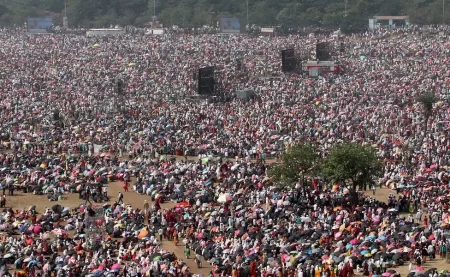India is one of the countries most exposed and vulnerable to heat. Hot days and hot night events have risen significantly, and are projected to increase between two and four-fold by 2050. Heatwaves are also predicted to arrive earlier, stay longer and become more frequent. Is India ready to deal with extreme temperatures?
The weather office has predicted above-average temperatures and heatwaves until the end of May. Average temperatures in India have risen by around 0.7% between 1901 and 2018, partly due to climate change.
Heatwaves killed more than 22,000 people between 1992 and 2015, according to official figures. Experts reckon the actual toll would be much higher. Yet, the country really “hasn’t understood the importance of heat and how heat can kill”, says Dileep Mavalankar, director of the Gujarat-based Indian Institute of Public Health.
“This is partly because we don’t compile our mortality data properly.” In May 2010, it was observed that the city of Ahmedabad had recorded 800 all-cause excess deaths a measure of how many more people are dying than expected, compared to the previous few years during a sweltering week of record-breaking temperatures.
It was clear, that heat was killing a lot of people. The researchers compared the total number of deaths in the city to the maximum temperature recorded on the day, and laid down three colour-coded alerts, with the red warning triggering above 45C. Is India ready to deal with extreme temperatures?
Prodded by these findings, Prof Mavalankar helped put together India’s first heat action plan for the city of Ahmedabad. The plan kicked off in 2013 and advocated simple solutions like staying indoors, drinking lots of water before stepping out, and going to the hospital emergency if one felt sick. By 2018, he says, deaths from all causes had declined by a third in the hot, dry city.
But the bad news is India’s heat action plans don’t seem to be working very well. (It is unclear whether the authorities in Navi Mumbai had a heat action plan in place when a million people reportedly were allowed to gather under the open sky.)
A new study of 37 heat action plans at the city, district, and state levels by Aditya Valiathan Pillai and Tamanna Dalal of Centre for Policy Research, a think-tank, found a lot of shortcomings.
For one, most of the plans were not “built for local context and have an oversimplified view of the hazards”. Only 10 of the 37 plans studied seem to establish locally defined temperature thresholds, although it was unclear whether they took factors like humidity into account while declaring a heatwave.
“We recommend nuancing and localising the heat hazard definition by including climate projections,” Mr Pillai told sources. One way to do it is to have more automated weather stations at village levels, according to Prof Mavalankar.
Also read: The Indian Dilemma and SCO Summit
